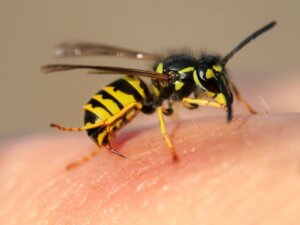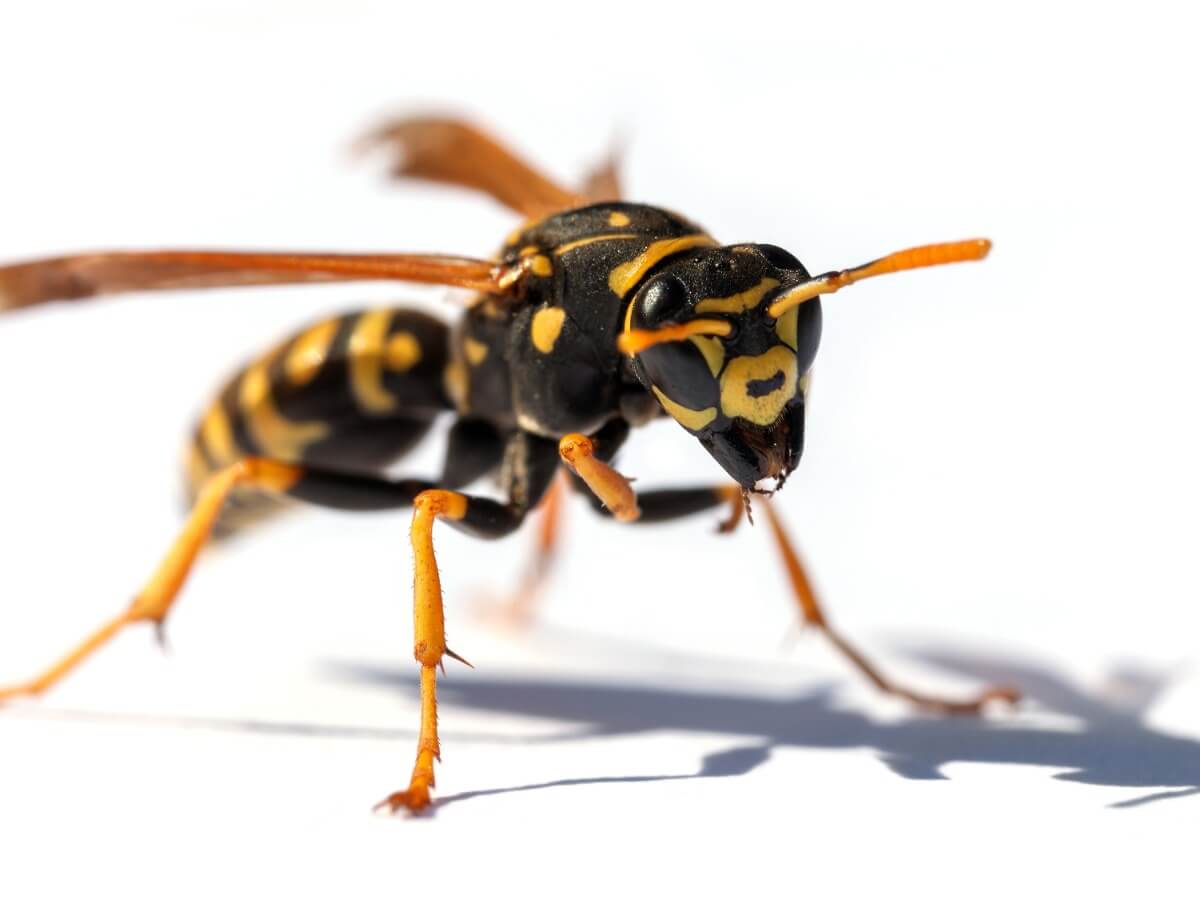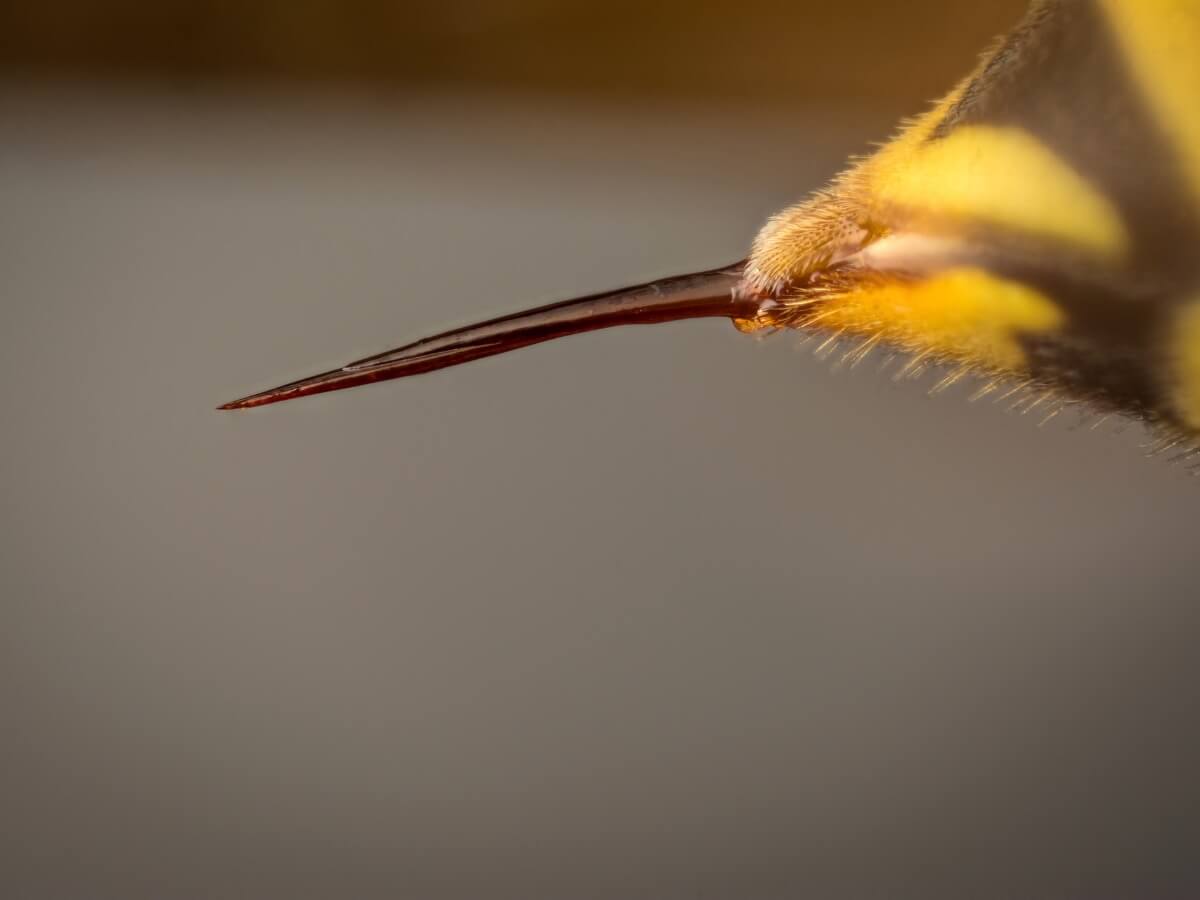Do Wasps Die When They Sting?


Written and verified by the biologist Samuel Sanchez
The question we’re posing today is a simple one: do wasps die when they sting? These hymenopterans, so common in the world, and aggressive towards people if they’re disturbed, raise many questions for us. Observing them closely is rather difficult, due to their speed of flight.
Among the many curious facts about wasps is their defense method – a stinger with the ability to inoculate poison. We know how to avoid them and how our skin reacts after a sting from them, but what happens to wasps once they have introduced their stinger into our body? Read on to find out.
General traits of wasps
Before answering the question that concerns us here, we need to define what a wasp is. These invertebrates are hexapod insects (with 6 legs), belonging to the Hymenoptera order, a group in which we also find bees and ants. Some 153,000 different species have been recorded in this taxon, of which more than 30,000 are wasps.
Wasps have adopted multiple forms and modes of life. There are parasitoids and hunters (such as the genus Pompilidae), solitary wasps (such as the Eumeninae subfamily) and eusocial wasps. Most Hymenopterans within this group are solitary and take care of their offspring on their own, but representatives of the Vespidae family do have a social organization similar to that of bees or ants.
We place a special emphasis on the latter group, as the species that concerns us here (Vespula vulgaris) is part of it. From now on, we’re going to refer to the typical European wasp. This is because it’s the one that has the most encounters with humans due to its wide distribution and its ability to adapt to urban environments.
Vespula vulgaris is a social insect, it lives in combs and has a characteristic yellow color with black stripes.

Wasp stings
Now that you know that the most common species in courtyards and cities is Vespula vulgaris, we can now have a look at its stinger. Curiously, this device is a modified ovipositor. This means that the stinger, in its ancestors, fulfilled the function of introducing the eggs into the ground or in the hollows of the trees, to protect them from possible predators and the weather.
In wasps, this structure is hardened, has a pointed shape, and is in direct contact with the associated poisonous glands. The compound inoculated in the insect contains amines (histamine, tyramine, serotonin and catecholamines), peptides and proteins, but it is rarely life-threatening (unless the human being is allergic).
The stinger is a clear defense mechanism in Hymenopterans. A wasp can sting for 2 reasons:
- Protection: Wasps are much more likely to sting when humans pass near their combs or if they try to destroy them. Their reason is to protect the larvae, so they won’t hesitate to use their stinger if their nest is in danger.
- Agitation: Waving your hands around can confuse and agitate a wasp as it flies, causing it to end up stinging.
As the ovipositor is exclusive to females, male wasps don’t have a stinger and can’t sting.
Do wasps die when they sting?
In this case, the answer is simple: no, they don’t. Those that die after inoculating their toxins through the stinger are bees, not wasps. Why this biological difference, if they are both Hymenoptera and relatively close relatives?
The solution is in the form of the stinger. Bees have a modified ovipositor with beards or spines at the tip, which makes it impossible to remove it from the skin once it has entered it. For this reason, the stinger gets caught in the epidermis of the stung animal, the bee loses part of its abdomen when pulling out, and ends up dying.
On the other hand, wasps have a much smoother, stronger stinger capable of retracting into the body of the invertebrate to sting successively in a very short time interval. Not only do they not die, but they’re able to chase the victim for several meters and inoculate the poison on more than one occasion.
Sting or bite?
Ultimately, it should also be noted that wasps have highly developed jaws, which allow them to bite animals and even draw blood. However, the bite doesn’t inoculate any venom, so the reaction is only superficial and much less obvious. The symptoms of a real wasp sting are summarized in the following list:
- Severe pain in the area of the bite
- Swelling (edema) and redness
- A white papule in the center of the edema, indicating the exact place of the stinger insertion
These symptoms should normally become less noticeable within hours of the sting and no medical attention is required. However, if the person is allergic and symptoms of anaphylactic shock are observed, an immediate adrenaline injection is required. This will be carried out either in a hospital or health center, or by using an EpiPen that the patient may be carrying.
Severe allergic reactions to wasp stings can be deadly. Fortunately, these aren’t common.

In summary, we can conclude that wasps don’t die when they sting an animal, but bees do. Precisely for this reason, it’s essential not to disturb them excessively and to try to stay away from their nests. An angry wasp can sting you several times and chase you until you get far enough away from its comb, so you’d better not give it reasons to get angry!
The question we’re posing today is a simple one: do wasps die when they sting? These hymenopterans, so common in the world, and aggressive towards people if they’re disturbed, raise many questions for us. Observing them closely is rather difficult, due to their speed of flight.
Among the many curious facts about wasps is their defense method – a stinger with the ability to inoculate poison. We know how to avoid them and how our skin reacts after a sting from them, but what happens to wasps once they have introduced their stinger into our body? Read on to find out.
General traits of wasps
Before answering the question that concerns us here, we need to define what a wasp is. These invertebrates are hexapod insects (with 6 legs), belonging to the Hymenoptera order, a group in which we also find bees and ants. Some 153,000 different species have been recorded in this taxon, of which more than 30,000 are wasps.
Wasps have adopted multiple forms and modes of life. There are parasitoids and hunters (such as the genus Pompilidae), solitary wasps (such as the Eumeninae subfamily) and eusocial wasps. Most Hymenopterans within this group are solitary and take care of their offspring on their own, but representatives of the Vespidae family do have a social organization similar to that of bees or ants.
We place a special emphasis on the latter group, as the species that concerns us here (Vespula vulgaris) is part of it. From now on, we’re going to refer to the typical European wasp. This is because it’s the one that has the most encounters with humans due to its wide distribution and its ability to adapt to urban environments.
Vespula vulgaris is a social insect, it lives in combs and has a characteristic yellow color with black stripes.

Wasp stings
Now that you know that the most common species in courtyards and cities is Vespula vulgaris, we can now have a look at its stinger. Curiously, this device is a modified ovipositor. This means that the stinger, in its ancestors, fulfilled the function of introducing the eggs into the ground or in the hollows of the trees, to protect them from possible predators and the weather.
In wasps, this structure is hardened, has a pointed shape, and is in direct contact with the associated poisonous glands. The compound inoculated in the insect contains amines (histamine, tyramine, serotonin and catecholamines), peptides and proteins, but it is rarely life-threatening (unless the human being is allergic).
The stinger is a clear defense mechanism in Hymenopterans. A wasp can sting for 2 reasons:
- Protection: Wasps are much more likely to sting when humans pass near their combs or if they try to destroy them. Their reason is to protect the larvae, so they won’t hesitate to use their stinger if their nest is in danger.
- Agitation: Waving your hands around can confuse and agitate a wasp as it flies, causing it to end up stinging.
As the ovipositor is exclusive to females, male wasps don’t have a stinger and can’t sting.
Do wasps die when they sting?
In this case, the answer is simple: no, they don’t. Those that die after inoculating their toxins through the stinger are bees, not wasps. Why this biological difference, if they are both Hymenoptera and relatively close relatives?
The solution is in the form of the stinger. Bees have a modified ovipositor with beards or spines at the tip, which makes it impossible to remove it from the skin once it has entered it. For this reason, the stinger gets caught in the epidermis of the stung animal, the bee loses part of its abdomen when pulling out, and ends up dying.
On the other hand, wasps have a much smoother, stronger stinger capable of retracting into the body of the invertebrate to sting successively in a very short time interval. Not only do they not die, but they’re able to chase the victim for several meters and inoculate the poison on more than one occasion.
Sting or bite?
Ultimately, it should also be noted that wasps have highly developed jaws, which allow them to bite animals and even draw blood. However, the bite doesn’t inoculate any venom, so the reaction is only superficial and much less obvious. The symptoms of a real wasp sting are summarized in the following list:
- Severe pain in the area of the bite
- Swelling (edema) and redness
- A white papule in the center of the edema, indicating the exact place of the stinger insertion
These symptoms should normally become less noticeable within hours of the sting and no medical attention is required. However, if the person is allergic and symptoms of anaphylactic shock are observed, an immediate adrenaline injection is required. This will be carried out either in a hospital or health center, or by using an EpiPen that the patient may be carrying.
Severe allergic reactions to wasp stings can be deadly. Fortunately, these aren’t common.

In summary, we can conclude that wasps don’t die when they sting an animal, but bees do. Precisely for this reason, it’s essential not to disturb them excessively and to try to stay away from their nests. An angry wasp can sting you several times and chase you until you get far enough away from its comb, so you’d better not give it reasons to get angry!
All cited sources were thoroughly reviewed by our team to ensure their quality, reliability, currency, and validity. The bibliography of this article was considered reliable and of academic or scientific accuracy.
- Kolarich, D., Léonard, R., Hemmer, W., & Altmann, F. (2005). The N‐glycans of yellow jacket venom hyaluronidases and the protein sequence of its major isoform in Vespula vulgaris. The FEBS journal, 272(20), 5182-5190.
- Griesbacher, T., Althuber, P., Zenz, M., Rainer, I., Griengl, S., & Lembeck, F. (1998). Vespula vulgaris venom: role of kinins and release of 5-hydroxytryptamine from skin mast cells. European journal of pharmacology, 351(1), 95-104.
- Golden, D. B., Breisch, N. L., Hamilton, R. G., Guralnick, M. W., Greene, A., Craig, T. J., & Kagey-Sobotka, A. (2006). Clinical and entomological factors influence the outcome of sting challenge studies. Journal of allergy and clinical immunology, 117(3), 670-675.
This text is provided for informational purposes only and does not replace consultation with a professional. If in doubt, consult your specialist.








